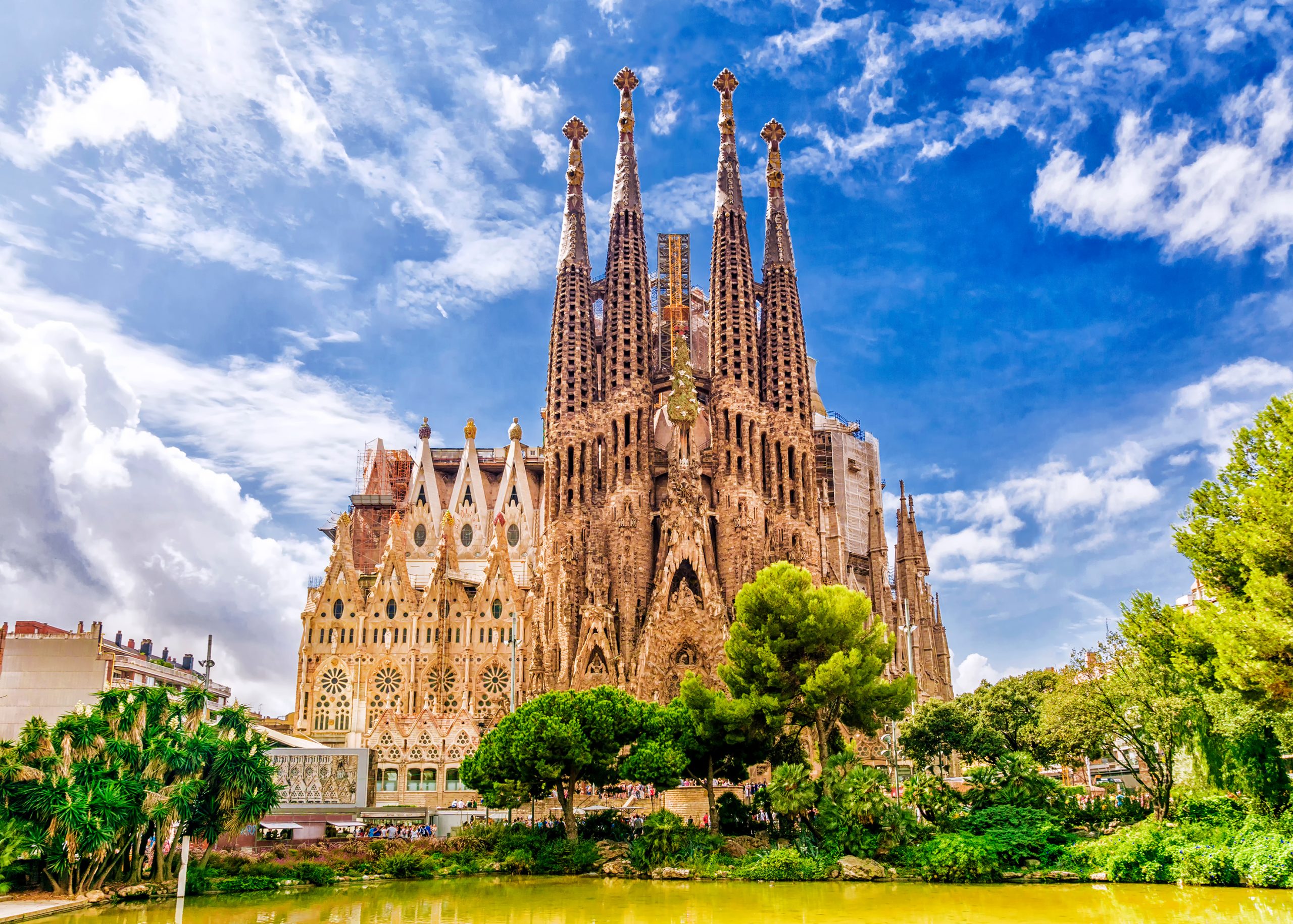10 Lesser-Known Facts About Spain That Will Amaze You

Spain is a mesmerizing destination, renowned for its rich history, vibrant culture, and stunning landscapes. From the bustling streets of Madrid and the architectural wonders of Barcelona to the sun-soaked beaches of the Costa del Sol, Spain offers an array of attractions that captivate millions of visitors each year.
Tourists flock to explore the awe-inspiring Sagrada Familia, marvel at the grandeur of the Alhambra, and immerse themselves in the lively atmosphere of La Rambla. Spanish culture is equally enchanting, with flamenco rhythms, tantalizing tapas, and passionate festivals creating an unforgettable experience.
While these iconic landmarks and cultural highlights are well-known, Spain is brimming with hidden gems and fascinating stories that often go unnoticed. This blog post aims to uncover ten lesser-known facts about Spain that will amaze you.
From secret pirate caves and a unique wine tradition to a village dedicated to Smurfs, these surprising insights offer a fresh perspective on this incredible country. Join us as we delve into the unexpected and reveal the intriguing secrets of Spain.
Fact 1: Spain has the Oldest Restaurant in the World
Spain proudly boasts the world’s oldest restaurant, Sobrino de Botín, a Guinness World Record holder that has been serving patrons since 1725. Located in the heart of Madrid near the Plaza Mayor, Sobrino de Botín is steeped in history and tradition. Founded by French cook Jean Botín, the restaurant has maintained its historical charm with wood-fired ovens still in use from the 18th century.
Visitors to Sobrino de Botín can enjoy a unique dining experience, surrounded by centuries-old decor and savoring traditional Spanish cuisine. The restaurant’s longevity and dedication to preserving its authentic recipes and cooking methods make it a culinary treasure and a must-visit for anyone exploring Spain’s rich gastronomical heritage.
Fact 2: Home to the World’s Largest Tomato Fight
Nestled in the quiet town of Buñol, Spain is the vibrant La Tomatina festival, celebrated annually with what can only be described as the world’s largest food fight. This eccentric event, held on the last Wednesday of August, sees tens of thousands of participants from around the globe converging in Buñol to throw overripe tomatoes at each other.
What started in 1945 as a spontaneous act of fun during a local parade has transformed into an internationally renowned spectacle. The festival begins with a “palo jabón,” where participants climb a greased pole to reach a ham at the top, followed by the chaos of tomato throwing.
The origins of La Tomatina are shrouded in mystery, but its tradition as a symbol of communal joy and release stays strong. Beyond the messy fun, the festival doses Buñol in camaraderie and cultural pride, rejuvenating the town each year and drawing a global crowd to share in the unique experience.
Fact 3: A Hidden Pirate Haven
Spain’s coastline has always been a magnet for seafarers and adventurers, but few know that it was once a hideout for pirates. Nestled along the rugged Costa Brava are the secret pirate caves of Cala Canyelles, a labyrinth of hidden grottos and underground passages that served as hideaways for pirates from the 16th to the 18th century.
These notorious marauders used the secluded caves to stash their plundered treasures and evade capture by the Spanish fleet. The caves’ strategic locations allowed pirates to launch surprise attacks on merchant ships navigating the Mediterranean Sea. Today, these once-mysterious hideouts have been transformed into fascinating historical sites.
Visitors can explore the caves and imagine the swashbuckling escapades of the pirates who once called them home. As relics of Spain’s tumultuous maritime history, the caves offer a unique glimpse into the adventurous and often perilous life of pirates, making them an intriguing addition to the rich tapestry of Spain’s heritage.
Fact 4: The First Modern Novel
Spain is the birthplace of the first modern novel, “Don Quixote,” written by Miguel de Cervantes. Published in two parts in 1605 and 1615, “Don Quixote” is considered a seminal work in Western literature, marking the transition from medieval chivalric romances to the novel as a literary form.
The story follows the adventures of the delusional yet noble-spirited knight, Don Quixote, and his loyal squire, Sancho Panza, as they embark on a quest to revive chivalry. Cervantes’ innovative narrative techniques, such as the use of a fictional narrator and the concept of metanarrative, had a profound impact on the development of the novel.
“Don Quixote” delves into themes of reality versus illusion, the decline of traditional values, and the concept of personal freedom, making it a timeless and universal tale. Its influence extends far beyond Spanish literature, inspiring countless adaptations, literary works, and philosophical discussions worldwide, solidifying its place as a cornerstone of literary history.
Fact 5: Unique Wine Tradition
Spain is renowned for its diverse and exquisite wine, and at the heart of its vinicultural heritage lies the Sherry Triangle. Situated in the Andalusian province of Cádiz, the Sherry Triangle encompasses the towns of Jerez de la Frontera, El Puerto de Santa María, and Sanlúcar de Barrameda.
This unique region is famed for producing Sherry, a fortified wine with a distinctive production process that sets it apart from other wines. The aging system, known as the solera method, involves blending wines of different ages to achieve a consistent and complex flavor profile. This meticulous process, combined with the region’s unique climate and soil, contributes to the distinctive characteristics of Sherry.
Beyond its production, Sherry holds significant cultural importance in Spain, embodying a rich tradition of communal drinking and celebration. It is often enjoyed during social gatherings and festivities, serving as a symbol of hospitality and conviviality. The Sherry Triangle not only produces a world-renowned wine but also preserves a cultural legacy that continues to captivate wine enthusiasts and visitors alike.
Fact 6: Ancient Roman Connection
Spain’s rich history is intricately woven with the legacy of Ancient Rome, which has left an indelible mark on the country’s cultural and architectural landscape. As part of the Roman Empire from the 2nd century BCE to the early 5th century CE, Spain, or Hispania as it was known, became a flourishing province with significant urban developments and infrastructure projects.
Key Roman sites like the aqueduct of Segovia, the Roman Theatre in Mérida, and the city of Tarraco (modern-day Tarragona) showcase the ingenuity and grandeur of Roman engineering and urban planning. The aqueduct of Segovia, with its towering arches, is a marvel of ancient engineering, while the theatre in Mérida remains a testament to the cultural importance of entertainment in Roman society.
Tarraco, a once-thriving provincial capital, reveals the administrative and strategic prowess of the Roman Empire through its well-preserved ruins, including a circus, amphitheatre, and forum. These sites not only highlight the historical significance of Roman rule in shaping modern Spain but also attract countless historians and tourists eager to glimpse the remnants of an empire that once spanned the known world.
Fact 7: A Village Dedicated to Smurfs
Nestled in the hills of Andalucía, the village of Júzcar stands out with its surreal blue hue, earning it the nickname “The Smurf Village.” Originally a traditional Spanish village with whitewashed buildings, Júzcar underwent a remarkable transformation in 2011 when it was chosen by Sony Pictures to promote the release of “The Smurfs” movie.
The entire village was painted blue to mimic the fictional Smurf village, creating a striking and whimsical landscape. After the promotional event, the villagers voted to keep the blue paint due to the influx of tourism it attracted. This unique transformation not only revitalized the local economy but also turned Júzcar into a beloved tourist destination.
The village now celebrates its Smurf theme with various Smurf-related memorabilia, events, and activities, making it a vibrant and playful spot that captivates visitors of all ages. Behind its charmingly blue facade lies a story of community spirit and ingenuity, turning an ordinary village into an extraordinary attraction.
Fact 8: Christmas Lottery Extravaganza
Few events capture the festive spirit of Spain quite like “El Gordo” (The Fat One), the grand Christmas lottery held annually on December 22nd. As one of the oldest and largest lotteries in the world, El Gordo boasts a deep-rooted cultural significance that extends far beyond its colossal prize pool.
The lottery’s draw, featuring children from the San Ildefonso school chanting the winning numbers and prizes in a rhythmic sing-song, is a cherished tradition broadcast on national television, bringing communities and families together in anticipation and celebration.
What makes El Gordo particularly unique is its system of sharing prizes; it’s common for several people to share a single ticket, turning potential individual winnings into collective joy. This spirit of communal participation and hope permeates throughout the country, as neighborhoods and workplaces join in syndicates to purchase tickets, hoping to share in the festive windfall.
El Gordo isn’t just a lottery; it’s a celebration of unity, shared dreams, and the magical essence of the Christmas season that illuminates the hearts of Spaniards.
Fact 9: Flamenco’s Deep Roots
Flamenco, the soul-stirring art form of music and dance, has its origins deeply embedded in the cultural tapestry of Andalusia in southern Spain. Emerging in the 18th century, Flamenco is a vibrant amalgamation of various influences, including the folkloric traditions of the region’s Romani, Moorish, Jewish, and Andalusian communities.
This rich cultural exchange has given birth to a genre characterized by its passionate and expressive performance style, intricate guitar work, emotional singing, and rhythmic dance. Over the centuries, Flamenco has evolved from a marginalised expression of the oppressed to a celebrated symbol of Spanish national identity.
Today, it continues to play a significant role in Spanish culture, serving both as a powerful form of artistic expression and as a communal activity that brings people together. Whether performed in an intimate setting or on grand stages, Flamenco captivates audiences worldwide with its profound emotional depth and cultural resonance, making it a treasured heritage of Spain.
Fact 10: The World’s Largest Leisure Resort
Tenerife, the largest of Spain’s Canary Islands, is set to become home to the world’s largest leisure resort—Europa Park. This ambitious development aims to rival premier global attractions such as Walt Disney World and Universal Studios.
Europa Park’s sprawling design will encompass a myriad of attractions, including themed lands inspired by various European countries, state-of-the-art roller coasters, immersive water parks, luxury hotels, and expansive entertainment complexes.
Scheduled to open in stages, the project is anticipated to significantly bolster the local economy by attracting millions of visitors annually and creating thousands of jobs. Beyond its entertainment value, Europa Park is poised to redefine leisure and tourism standards, positioning Tenerife as a key player in the global resort market.
This massive development highlights not only Spain’s growing influence in the tourism industry but also the island’s natural beauty and cultural vibrancy, offering visitors an unparalleled holiday experience.
Conclusion
Spain is a country brimming with surprises and lesser-known wonders that extend far beyond its famed landmarks and bustling cities. From the incredible Roman ruins of Segovia, Mérida, and Tarraco to the whimsical Smurf village of Júzcar, there is no shortage of fascinating stories waiting to be uncovered.
The grand Christmas lottery, El Gordo, binds the nation with shared hope and festivity, while the deeply rooted traditions of Flamenco reflect a profound cultural heritage. Additionally, the future Europa Park in Tenerife promises to elevate Spain’s status as a world-class tourist destination.
Each of these hidden gems contributes to the rich mosaic that is Spain, encouraging both locals and tourists alike to delve deeper into its diverse regions and vibrant history. Whether you are wandering through Roman theatres, celebrating with the locals over a lottery draw, or immersing yourself in the soulful rhythms of Flamenco, Spain offers a unique journey that goes beyond the typical tourist itinerary.
We invite you to explore these hidden facets of Spain and uncover even more remarkable experiences. Have you discovered an extraordinary fact about Spain that wasn’t mentioned here? Share your own surprising discoveries and contribute to the ongoing adventure of exploring this multifaceted nation. Your stories and insights can help others see Spain through new eyes and inspire further travels into the heart of this enchanting country.




